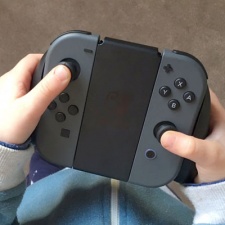There’s been more than enough analysis of the Nintendo Switch and its launch games.
That’s not what I’m about.
I’m one of the very few people to own a Switch and not have any games for it.
Instead, my interest in the Switch is its physical aesthetics, which are - to me at least - its most intriguing feature.
Screen time
The core unit (17 x 10 cm) looks old fashioned.
Rather than running close to the edge like most contemporary touch devices, the screen has a thick frame surrounding it, resulting in a screen sized 13.7 x 7.7 cm.
Hands used to phones and phablets will also be surprised by the Switch’s relative thickness and weight.
There’s a lot of hot electronics packed inside; witness the substantial fan inlet. There’s the usual array of other slots too: USB-C charging port; game card slot; plus a 3.5mm audio jack.
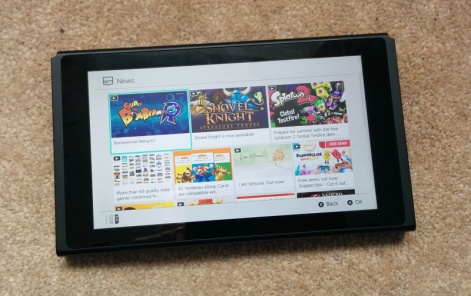
Indeed, the Switch reminds me of BlackBerry’s ill-fated Playbook 7-inch tablet from 2011, which demonstrated excellent build quality, although lacking much in the way of design ethos.
It can be argued Nintendo's success is fundamentally built on its controllers.
Overall, the Switch unit feels interesting...
The only thing I’m not sure about is the rubberised kickstand, which also acts as the microSD card cover.
It feels cheap and like the hinge is ready to pop off should it experience any over-rotation. It also only has one position, and that’s not laid back enough for my viewing tastes.
Heart of the matter
Of course, the core unit isn’t what Switch is about; something that made clear by the odd-looking industrial grooves on each side.
These are where you slide in the Joy-Cons.
The mechanical process of doing so feels a little sticky, partly because the grooves are metal whereas the Joy-Cons are plastic. As you slide it in, however, there are two moments where you have to push a little more forcefully, and eventually a reassuring click tells you everything is in position.
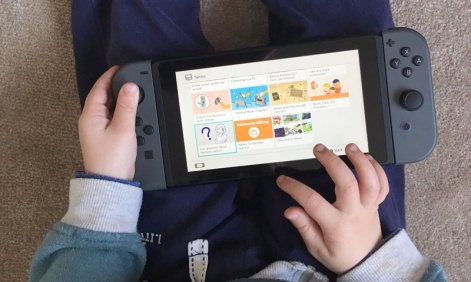
As a complete unit (in Handheld mode), the Switch - again - feels a little odd. Obviously it’s much wider than say a PSP GO but thinner than a tablet of similar width.
And it’s the Joy-Cons themselves that worry me. Slid into place on the sides of the core unit, they are certainly usable, if small.
But used externally and separately, they are lightweight and everything about them - the fascia buttons, shoulder buttons, joysticks - is tiny: an odd combination and one that gives the perception of disposability.

This feeling isn’t particularly improved when you slot them into the provided - also small - controller frame.
Size has often been an issue for game controllers.
Sliding them into place is more tricky than doing so in the main unit too because you’re trying to engage the Joy-Con in the slider groove while being constrained by the tight tolerance afforded by the ‘wing’ of the frame.
It’s not a complex manoeuvre, but one that doesn’t feel natural and could have been made simpler.
Handy games
Yet Nintendo has never played the game when it comes to controllers.
It was controller innovation which resulted in the Wii’s success.
Indeed, it can be argued Nintendo’s success is fundamentally built on the controllers which enable its games.
Switch’s approach is certainly no less innovative than that which has come before. But when you’re not using the Joy-Cons attached to the main unit, the downsides of innovation are apparent.
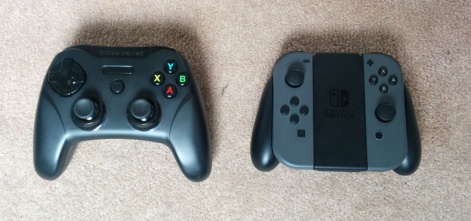
As a controller, it’s just too small, at least for my medium-sized hands, and I’d be surprised if the larger and more traditional Pro controllers don’t eventually get included with a Switch, or at least made available very cheaply as part of a game bundle.
Big hands
Size has often been an issue for game controllers, though.
Back in the day, Microsoft trumpeted the many hours of testing the original Xbox controllers had gone through, before quickly replacing them with the smaller S controller originally designed for the Japanese market following real player feedback.
And without falling down the rabbit hole of genetics/nationality and body size, everything about the Switch screams it’s been designed primarily for its domestic market.
It’s small, it’s cute and it isn’t looking to compete with the horsepower of the latest PlayStation and Xbox games writ large across a 105-inch 5K screen.

Maybe that will be its appeal but there’s no getting away from the fact it’s as radical a departure as the original Wii was, perhaps even moreso considering the dual home/portable concept.
Which - as an aside - brings us to the Switch’s vertical stand.
About as cheap a piece of plastic as it’s capable to make, it contains the electrical connections for charging, HMDI out for TV connection and three USB slots. When not being used for TV play, the best that can be said about it is it keeps your Switch’s screen out scratch trouble.
Game changer
Will Switch’s aesthetics have any impact on its success?
Most people would suggest not: success will be a byproduct of the games.
I wonder. Form follows function and the innovative nature of the Switch, which can be used in three configurations...
- TV mode - in stand
- Tabletop mode - Joy-Cons separate from screen
- Handheld mode - Joy-Cons in screen
...that will, I think, ultimately be too confusing for the mass market that loved Wii and ignored Wii U.
If industrial design tells us anything, it’s that you need to work out what your product is, what it’s for and then mercilessly hone its form within that context.
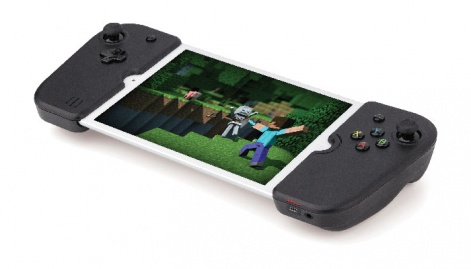
For me, the Switch feels most natural in portable mode; the rest is superfluous, in which case, it won’t be clear to many people why they shouldn’t just buy a $100 Gamevice (or similar control device) for their phone/tablet.
On second thoughts, Nintendo better have some killer games...

